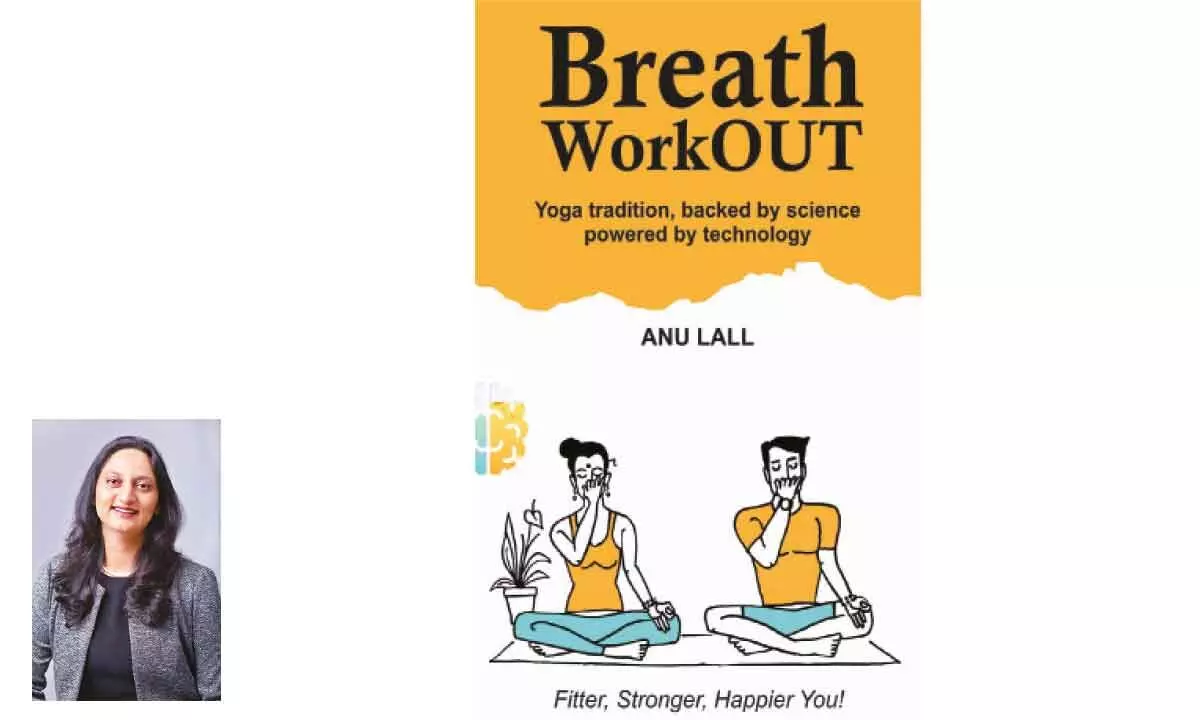Live
- India Faces Blow as Pacer Mohammed Shami Ruled Out for Remainder of Australia Series
- Biden Pardon: Joe Biden Commutes Death Sentences of 37 Inmates, Including Child Killers and Mass Murderers
- South Korea: Yoon believes impeachment trial takes priority over martial law probe
- Strict Action for Non-Adherence to Time Management - DMHO Dr. Swarajya Lakshmi
- Over 13.29 lakh houses approved for rural poor in Maharashtra: Shivraj Chouhan
- District Collector Urges Timely Completion of Indiramma Housing Scheme Survey
- Digital Arrest Scam: Hyderabad Man Duped of ₹7 Lakhs by Fake Crime Branch Police Callers
- Sukhbir Badal seeks President's Police medal for officer who saved his life
- US Firm Accordion Acquires Merilytics, Launches 1,500-Seater Office in Hyderabad
- Free Medical Camp Organized by Alampur Advocate Bar Association
Just In
Book Excerpt: The power of breath for mental and physical well-being


Chapter 14 - Five Types of Air Circulation When one breathes properly, the movement of air across all the channels is free flowing and healthy. If...
Chapter 14 - Five Types of Air Circulation
When one breathes properly, the movement of air across all the channels is free flowing and healthy. If breathing is impaired, or there are obstacles to breath, (discussion in Section II) the movement of air is affected which blocks the channels of vital breath initially affecting the neck and head and finally the entire body.
There are fives types of vayus or air circulation in the body. Each of these vayus or pranas represents the vital energy flow of the body. It travels through all the gross and subtle channels of the body, running like an air current with intensity, force and direction, just like a stream.
There are five types of air circulation in the body. They are identified based on their location in the body, the direction in which they flow and the functions they perform.
When you practice conscious breathing and when it is done well, it affects all the five types of vayus and brings holistic and complete well-being to the mind and the body.
1. Prana Vayu: Prana Vayu is the energy current present largely in the lungs and blows in the upward direction in the body. It affects circulation and respiration. Some Ayurveda doctors say that its primary seat is in the lungs. Others say that it rests in the heart, chest and lungs. This vayu governs the physical actions of chewing, swallowing, coughing, intake, inspiration, propulsion and momentum.
This may also manifest in the emotional aspects of moving forward in life. Breathing difficulties significantly impair these functions.
This roughly correlates to the Breathing Hurdles #1 Nose and #2 Throat, which we have discussed in the previous sections of this book.
2. Udana Vayu: This vayu moves in circular motion and handles circulation around our chest and throat. This controls exhalation, speech, functions of the tongue, energy of the body, memory and thought.
This roughly correlates to the Breathing Hurdles #2 Throat and Breathing Hurdles #3 Chest in the previous sections of this book.
3. Samana Vayu: This is the vayu in the stomach, abdomen and GI tract, and around the navel. Its key role is digestion and absorption of nutrients. Samana separates the waste from the food and is responsible for the proper working of digestive fire. It transports the nutrients throughout the intestines.
This roughly correlates to the Breathing Hurdles #6 Throat and Breathing Hurdles #3 Chest discussed earlier.
4. Vyana Vayu: This handles overall circulation throughout the entire body, right from the center to the extremities. It carries prana and nutrition to all the cells and the extremities of the body. Vyana vayu is responsible for a healthy nervous system.
This may be loosely related to the overall functioning of the mind and prana in the body, and factors such as stress, anxiety, mind and emotions. These may manifest as Breathing Hurdle #4 and #5.
5. Apana Vayu: This is the energy that moves downwards from below the navel. Its location is below the sacral area, towards the bladder and the reproductive organs. Its primary responsibility is good health of the pelvic region and elimination of waste. All thoughts, desires, emotions, fear and anxiety emanate from here. Derangement of apana can cause constipation or diarrhea depending on its intensity.
With breathing exercises, we can regulate all the vayus to flow correctly. The breathing exercises focus on all these aspects of the body.
Since breathing affects all aspects of the body and mind, good breathing can give us significant benefits. The impact of good breathing goes way beyond just the nostrils and lungs. It affects our entire life force.
(This excerpt from ‘Breath WorkOUT for Life: For a Fitter, Stronger and Happier YOU’ written by Anu Lall, has been published with permission from Milap Publications, Rs 399)

© 2024 Hyderabad Media House Limited/The Hans India. All rights reserved. Powered by hocalwire.com






